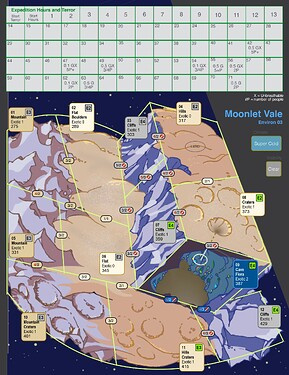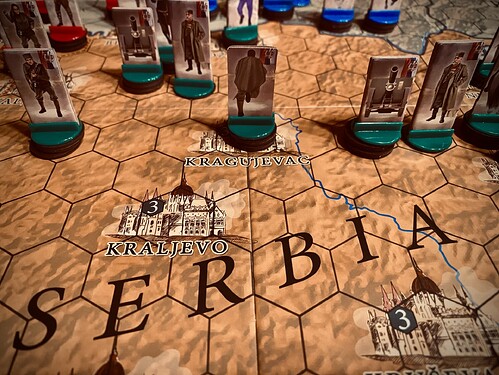I love invasion/airborne assault type games in general, and Market Garden is always a fun set-up.
Apparently Rule the Waves 3 has been pushed to Q2 (no real surprise there) and “not April”. Guessing summer at best for this one.
I’m fine with them taking their time. It is Matrix, so he likely isn’t getting much help beyond someone to make manuals pretty, and someone coordinating the testing group.
I remain to be convinced Rule the Waves is suitable at post WW1 naval combat. I would have preferred more detail of the Dreadnought era than the missile era.
I never got around to picking up 2. How did the air combat bits work out? Did they stick subs in as well?
This may be more than you want, but here goes:
Submarines: You can build two kinds of subs (coastal, and not coastal); they don’t do a lot other than commerce raiding and occasionally torpedoing the enemy/your ships in events. In fleet battles they are present but that’s about it; you will rarely see a sub torpedo some ship once a battle ends, in a pop-up. Tech for subs advances like the rest of tech, that is to say, basically at random as time progresses based on how much emphasis you tell your scientists to put on sub tech, and how much money you spend on tech overall. I usually kept some of them around to do commerce raiding, so my cruisers and destroyers could do trade protection, foreign service, and screen the capital ships. If you were fighting the UK or Japan, it might make sense to concentrate on subs, but I found defeating the enemy fleets to be sufficient to create a “Blockade” status.
Carriers/planes: Carriers were designed like other ships; you pick your tonnage and how many planes you wanted to put on it, the various features you want, the speed, etc. Tech advanced like the rest of tech, although you did have to have at least one carrier in the water to get tech to advance, so you couldn’t just research carrier tech without spending money on one; I thought this was a good rule.
Companies would occasionally present you with a new model of a particular type of aircraft, i.e. medium bomber, fighter, dive bomber, torpedo bomber, or floatplane. Otherwise you could choose to solicit proposals for new planes from which you could pick one or more to put into production. Companies would propose them, which you’d get in a little spreadsheet with stats for range (broken down into ranges by armament weight), speed, firepower, maneuverability, defense, and reliability. Before about 1920, reliability is the most important stat, because early planes are undependable. You pick the plane(s) you like and they gradually fill your squadrons on airbases and on carriers.
Before battles, you are asked to decide if land-based air should attack ships or suppress the enemy’s own airbases. I think I usually told them to attack ships, unless we were fighting somebody like Italy where they had a bunch of airbases nearby; then I could see value in suppressing the enemy’s land-based aircraft.
For carrier-based aircraft, you had to manage all of it. You have tell when to ready strikes; determine the composition of the strike force between the available fighters and dive/torpedo bombers on each carrier; determine the armament weight based on the range to the target (light/medium/heavy for dive-bombers/fighters; torpedo bombers only carry torpedoes); and then pick a target point for them to fly to. The planes then fly to the place you tell them, do a little looking around if there’s nothing there, and then fly back; if they find ships at the target, they either make attack runs at whatever they want, or concentrate on carriers or battleships if you told them to do that. There is no option to tell them to concentrate on CVs/BBs in combination; it’s one or the other. You have to click a “Coordinate Strike” button to ensure that the fighters and bombers arrive over the target together; in addition, before a certain tech, each carrier launches its aircraft separately. You have to develop the technology to coordinate strikes amongst carriers.
You get little pop-ups that say “123. Squadron is approaching enemy ships!” and then other pop-ups that say things like “Unidentified ship struck by torpedo!/bomb!” or “Enemy battleship struck by a torpedo!” or “IJN Akagi struck by a bomb!” depending on if you’ve identified the enemy ships or not. If there’s more than one hit, you get more than one pop-up. Some bombs and torpedoes are duds and do nothing.
You have to decide if you want your fighters to provide CAP (air cover) or escort your bombers on strikes; you have to decide which formation each carrier will provide CAP to. If you don’t make any choices, I think they choose to protect themselves, but they may also do nothing; I didn’t test it.
I thought it was a very fiddly interface in an already fiddly game. I did figure out how to use it with plenty of success, but I still think it’s fiddly. I am not smart enough to figure out a better way. I also think the way it presented the results with a bunch of pop-ups was odd (the other ships report their hits through text in a box on the left, not pop-ups), but it does at least convey the helplessness of commanders who have to sit on the bridge and get reports of hits and misses with no way to do anything about it.
Sounds like it is up there with Tiller’s Midway on the fiddly level, maybe a bit less. I guess Command is pretty bad too. Now I want to go see how SSG’s Carriers at War handles it.
Thanks for the info.
On a boardgame related note, anyone else excited about Away Team, from GMT Games? I watched a designer session about the game today at the SD Hist Con. 80-hour campaign of space exploration aboard the spaceship Pandora, with a 100-page, 1000-paragraph event system driving gameplay. Crew skill advancement, a grand story that drives the campaign, and 7 star systems to explore.
And on a completed unrelated note, new on the table: March on the Drina, a game about Serbia in WW1.
Away Team looks wicked cool.
Yes, after finding out about it yesterday! I will probably P500 it!
I had been wondering wether to buy the old Butterfield Pandora game to give them a try.
The announcement of a reimplementation, which it’s what this looks like, made me happy. Now I can get old school mechanics with semi modern production values!
Will we see a remake of Ambush! after this? I certainly hope so.
From the sounds of it, it’ll be a fairly big expansion of the original games’ scope. I’m not sure I know of any other game quite like it in terms of vision.
I wonder about the overall balance of the grand campaign, and how it will all play out. Balancing an 80-hour campaign that is easier the second time through sounds like a playtesting challenge. But that aside, the potential for generating interesting narrative sounds immense.
I didn’t realize it was based on the work Butterfield did at SPI. Interested, but haven’t done p500 yet. I did p500 the space empire series.
It sounds like the paragraph system is similar to what he did with Ambush, and I guess the original. That had me wondering if there are other games that have used it.
This is a cool use for ChatGPT - parse the output of wargames into a narrative.
If this helps devs put out games with better action summaries and after-action reports for players, good thing I think.
When will they have one that you can give it a map + some forces, and ask it come up with a plan? :)
They do! It’s what the Russians have been using.



